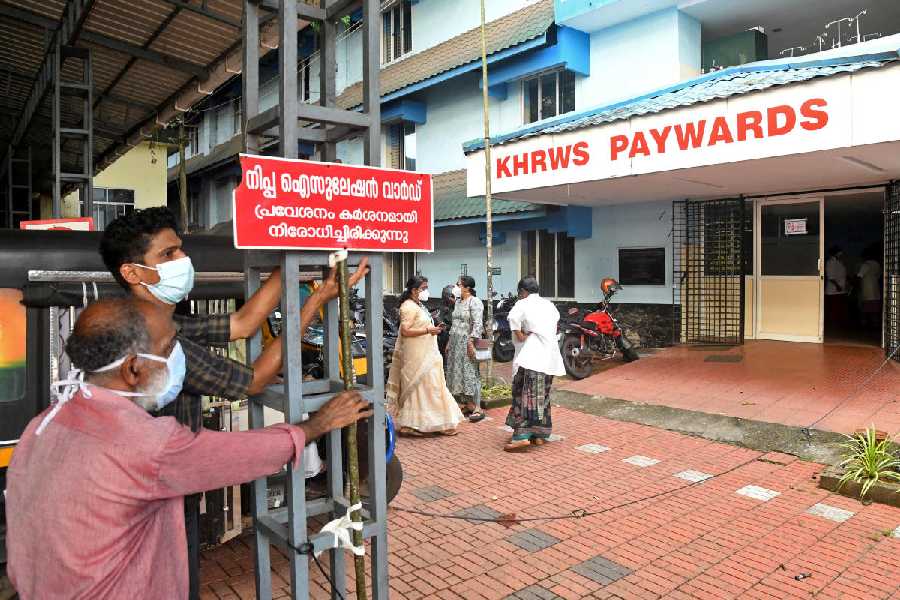Two people have died from Nipah virus infection in Kerala’s Kozhikode district and samples from four other suspected cases are currently under investigation, health authorities said on Tuesday.
Union health minister Mansukh Mandaviya, who confirmed the two deaths as caused by Nipah, also said the Centre had sent a team of health experts to assist the state in managing the infection.
This is Kerala’s third flare-up of Nipah after an outbreak of 23 cases in 2018 and a single case in 2021. Nipah is a deadly infection with case fatality rates of 50 per cent to 90 per cent but, doctors say, it is relatively easy to contain through the isolation of patients and their contacts and other precautions.
The Kerala government on Tuesday set up a control room in Kozhikode and advised people to use masks as a precautionary measure, a PTI report from Kozhikode said. The report also said the state on Tuesday evening was awaiting the results of samples sent to the National Institute of Virology, Pune.
The standard public health responses involve tracing and quarantine of all close contacts of patients, testing and isolation of anyone who shows symptoms, and the establishment of perimeter zones to prevent the spread of the infection.
Fruit bats serve as natural reservoirs of the Nipah virus. Studies over the past decade have revealed Nipah virus genetic material in samples of bats collected from Assam, Bengal, Haryana, and Kerala. Virologists say human infections are rare.
Nipah infection symptoms include fever and respiratory distress that typically progresses to encephalitis. Person-to-person spread of the Nipah virus requires touch or close contact with infected persons through nasal or respiratory droplets, urine, or blood.
Viral genome analysis from the solitary case in 2021 had revealed that the virus was “clustered” with samples from the earlier 2018 outbreak in Kerala implying a stable genotype of the virus had been circulating locally in Kerala’s bat population.
Virologists say it is unclear how the virus slipped from bats into humans, but suspect that one possible route of entry might open up when a person consumes a fruit contaminated with bat saliva.
Kerala’s 2018 Nipah outbreak had seen 21 of the 23 patients losing their lives.
Scientists at the National Institute of Virology believe the quick containment measures and biosafety precautions practised during the Covid-19 pandemic helped prevent further transmission and restricted the outbreak to a single case.
Health authorities have earlier documented outbreaks of the Nipah virus in Bengal’s Siliguri in 2001 and in Nadia in 2007.
The virus has also caused sporadic outbreaks in Malaysia, Singapore and Bangladesh over the past two decades.











